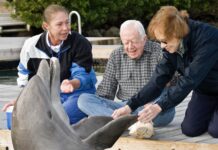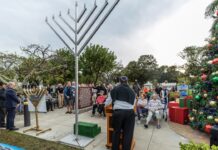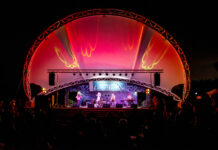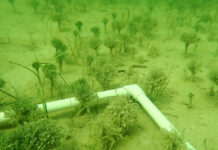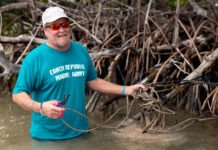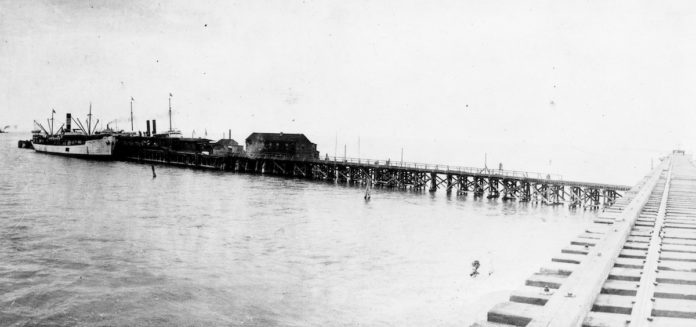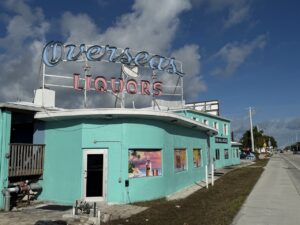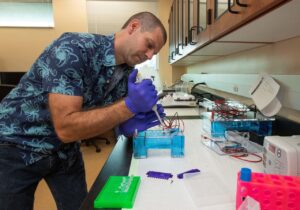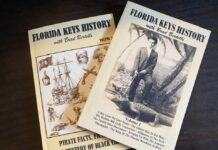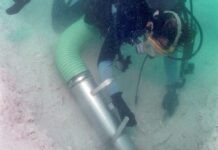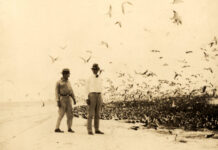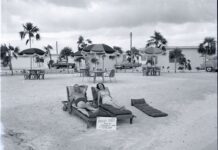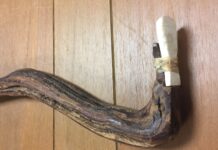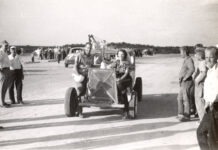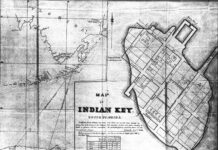The decision to run the Key West Extension of Henry Flagler’s Over-Sea Railroad from the mainland to Key West altered the future of Florida’s southernmost archipelago. The Keys were no longer an isolated collection of islands connected to the outside world solely by boats dependent on tides and weather to bring mail, food staples and visitors. The celebrated arrival of the train to Key West occurred on Jan. 22, 1912. It would come earlier to other islands in the chain. In 1908, Henry Flagler’s train began running service to stations as far south as Knights Key, at the foot of what would become known as the Seven Mile Bridge, with departures scheduled at 5:40 a.m. and 10 a.m. daily.
Knights Key served as the temporary terminus for the railroad until the line was completed to Key West in 1912. It also operated as a major seaport, servicing not just the train, but steamships operating between Flagler’s railroad and Havana — just as Key West would in the years to come.
Work began at Knights Key in 1906. A newspaper clipping dated April 28, 1906 read, “A large number of workmen are now at work at Knights Key. They will build warehouses and docks there with the intention of making the Key a supply station. A large cistern and the big buildings are already on the Key and lumber and material for the other work is being hauled there in large quantities. The docks will be built on the west side and extend out to the 25-foot channel for the accommodation of deep draught vessels.” A story from the Florida Times Union dated Dec. 18, 1906 added, “Because of the large number of vessels visiting Knights Key with materials for the railroad extension work, the Key has recently been made a port of entry with Dr. Cotton as deputy inspector.”
Work on the Knights Key docks was interrupted by an October hurricane that took a devastating toll not just on work being done on the Key West Extension, but also on railroad workers.
The storm was first spotted over the Windward Islands on Oct. 11. The eye of the hurricane passed over Long Key on Oct. 17. Near the center of the storm, winds were swirling at an estimated 100 mph. The Category 2 hurricane was tightly wound and it was reported that while a grove of coconut palms were snapped into splinters on Long Key, trees located 20 miles to the north and south remained upright.
Railroad workers housed in quarterboats, large “houseboats,” proved particularly vulnerable in the storm-affected areas. Two houseboats loaded with 45 men each had been moored off of a work camp on Lower Matecumbe Key. Ripped from their moorings, the vessels were carried out to sea, but no loss of life was recorded.
The same could not be said for quarterboats moored on the Gulf side of the Long Key work camp.
Each housed 150 men. The vessels had been secured with six mooring lines and an anchor. According to Mr. W.P. Dusenbury, the civil engineer in charge of railroad work on Key Largo, it was 5 a.m. when the furies of the storm snapped the anchor chain and the two Long Key houseboats broke free. One of the boats washed out into the Gulf, but was pushed back on to shore. House Boat No. 4, however, was blown into the Atlantic and out to the Gulf Stream. The vessel was pounded in the storm-driven swells until it splintered. In the end, only 83 men survived. Mr. Dusenbury was discovered clinging to a piece of wood and taken aboard the Austrian steamer Jennie before being transported to Key West.
Though progress was interrupted by the 1906 hurricane, once the Knights Key dock was completed, it stretched 4,000 feet out into the Atlantic and was large enough to accommodate warehouses, an office and depot building, as well as two sets of railroad tracks. Two trains and two ships could use the dock at any one time. A post office and telegraph station opened at Knights Key on May 27, 1908. When the tracks and bridges that finally linked the mainland to Key West were completed and daily service was established, the Knights Key dock became obsolete and was ultimately abandoned and destroyed.
Brad Bertelli is curator of the Keys History & Discovery Center.

